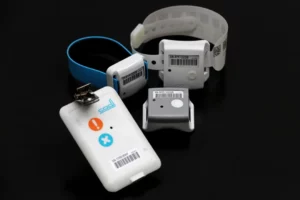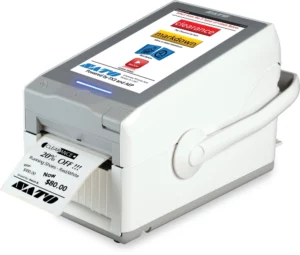RFID technology provides various benefits to the healthcare industry, including fewer human errors, greater patient safety, and increased task accuracy.
Patient safety has emerged as a serious public health issue as the world’s population and patient numbers continue to rise at an alarming rate. Medical errors are on the rise in the healthcare industry due to an overabundance of patients and insufficient technology availability.
Smart patient tracking is an outstanding example of how RFID and IoT may help improve services and, as a result, provide better treatment in the healthcare industry. However, there are always challenges with new ideas.
This article details the benefits and challenges of RFID smart patient tracking to assist hospitals and medical institutions in understanding what to anticipate with this new technology.
Evolution of RFID Technology in Healthcare
Because of its capacity to detect and trace data, radio frequency identification (RFID) is expected to be the next great disruptor in the healthcare IT industry. RFID has developed into one of the most powerful technologies for gathering data and automating the tracking of persons, assets, and items’ whereabouts, movements, and identities. Radio waves are used to gather and transmit data without the need for human intervention. It comprises RFID tags with a small chip that captures and retains critical data before sending it to an RFID reader. To keep track of patients and people, such tags might be placed on equipment or staff badges.
The benefits provided by embedded RFID, which allow healthcare institutions, hospitals, and clinics to increase efficiency, reduce capital costs, and improve patient care, are driving up demand for the technology. RFID technology enable an efficient and cost-effective information system to improve patient treatment from admissions to administration.
What is Smart Patient Monitoring?
In hospitals, patient monitoring aids in improving security, identifying and addressing holes in internal systems, improving bed allocation, updating physicians’ schedules, and improving overall patient satisfaction. RFID and IoT technologies are used to provide patient monitoring, data storage, and data analysis.
A patient is given an RFID wristband when they arrive at the hospital. ID, name, electronic medical record, allergies, current condition, test results, suggested medications, and other pertinent information are all included on a patient’s tag. Readers located on the walls and ceilings around the hospital and its surrounding region gather data about the tag’s position and send it to the IoT cloud for processing and analysis as a patient moves throughout the facility.
The analysis may be done in real-time to detect crises, as well as using past data (such as health records) to identify bottlenecks in internal hospital procedures and, as a result, therapy.
4 Benefits of Smart Patient Monitoring
Live Patient Location Monitoring
For elderly patients and individuals with mental illnesses, real-time insight into each patient’s location is extremely important. For example, elderly patients or those suffering from neurological disorders (such as Alzheimer’s disease) may get disoriented in the hospital, roam around, and get lost. An RFID tag will make locating these people and getting them back much easier.
Many more advantages can be gained from improved real-time visibility into each patient’s location, such as:
Family members are swiftly guided to a patient or told when a patient is no longer scheduled for an appointment. Nurses have more possibilities to keep track of children’s patients (who, for example, may interact with their peers and forget about necessary appointments). When all of the patients have left the room, the housekeeping staff is contacted, and the room may be cleaned.
Keeping Patients Safe at All Times
Smart patient monitoring allows for faster identification of accidents, such as when a patient falls down the stairs. An IoT system detects an incident based on data about a patient’s motions and the rate at which they change and sends an alert to the nurse in charge.
If an emergency (such as a fire) occurs in a specific ward, floor, or department, hospital personnel can ensure that all patients have exited the danger zone and that there are no immobile patients who require special assistance with evacuation left behind.
In the long run, a hospital may be able to predict potentially problematic regions and take action to prevent future mishaps by studying data from previous incidents.
Improved Monitoring of Patient Recovery
A patient may forget to take medicine, go to a doctor’s appointment, have a screening, or undergo a certain operation. RFID monitoring allows doctors to quickly determine a patient’s exact position and remind them of upcoming appointments. A floor nurse can be in charge of this. A patient may also get notifications via a mobile app or a built-in alert mechanism in a patient wristband.
Predicting Patient Admissions
RFID data gathered over time can assist a healthcare institution in anticipating patient flow. This data may also be used to determine how much medication and equipment to buy in the long run to guarantee that it is used and not thrown away.
Conclusion
Smart patient monitoring with RFID and IoT provides increased insight into each patient’s whereabouts, enhances patient safety, and aids in identifying and filling gaps in internal hospital operations.
Learn more about RFID in Healthcare and how Makamat approaches this product here.


